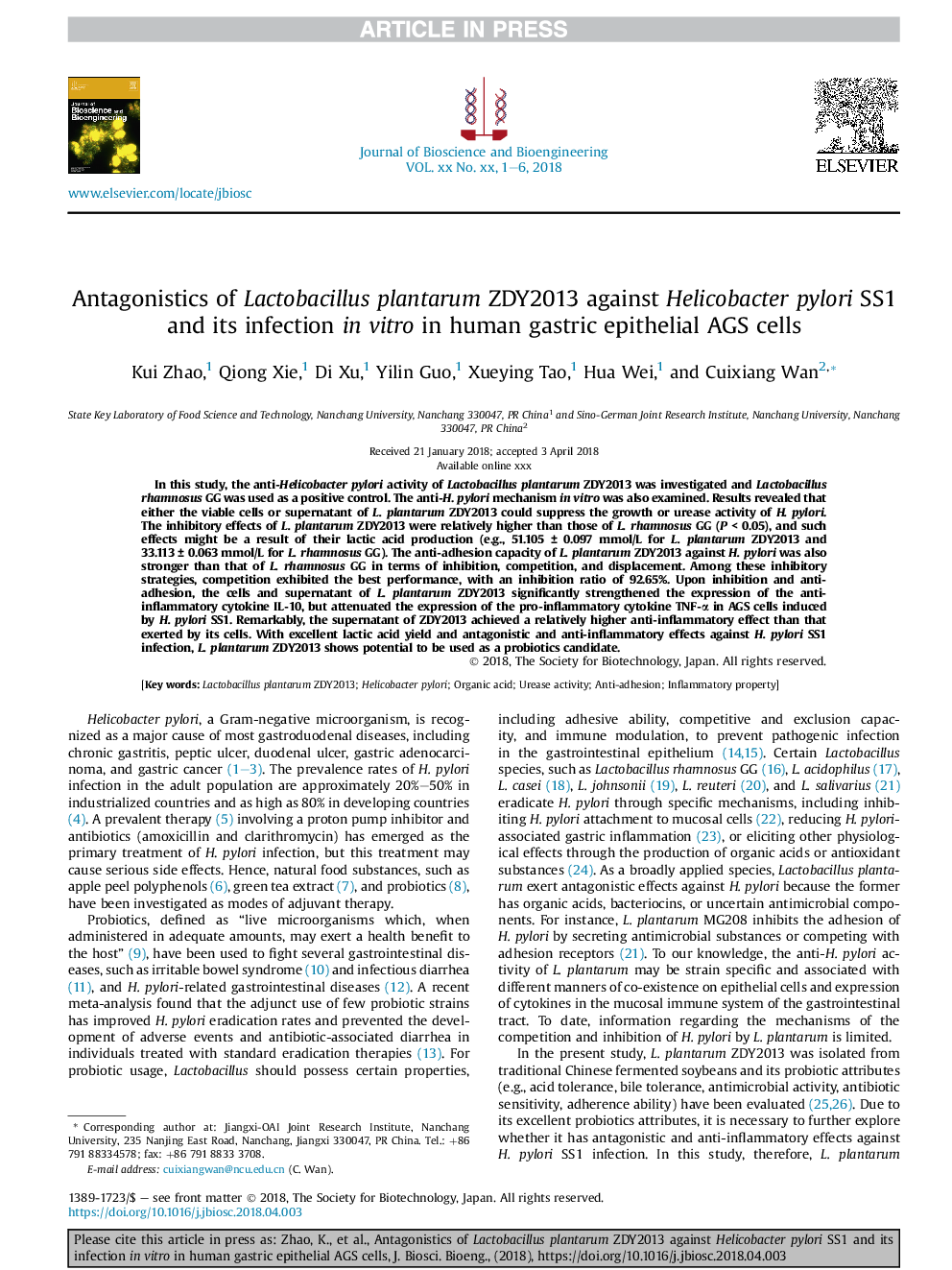| Article ID | Journal | Published Year | Pages | File Type |
|---|---|---|---|---|
| 11021632 | Journal of Bioscience and Bioengineering | 2018 | 6 Pages |
Abstract
In this study, the anti-Helicobacterpylori activity of Lactobacillusplantarum ZDY2013 was investigated and Lactobacillusrhamnosus GG was used as a positive control. The anti-H. pylori mechanism in vitro was also examined. Results revealed that either the viable cells or supernatant of L. plantarum ZDY2013 could suppress the growth or urease activity of H. pylori. The inhibitory effects of L. plantarum ZDY2013 were relatively higher than those of L. rhamnosus GG (P < 0.05), and such effects might be a result of their lactic acid production (e.g., 51.105 ± 0.097 mmol/L for L. plantarum ZDY2013 and 33.113 ± 0.063 mmol/L for L. rhamnosus GG). The anti-adhesion capacity of L. plantarum ZDY2013 against H. pylori was also stronger than that of L. rhamnosus GG in terms of inhibition, competition, and displacement. Among these inhibitory strategies, competition exhibited the best performance, with an inhibition ratio of 92.65%. Upon inhibition and anti-adhesion, the cells and supernatant of L. plantarum ZDY2013 significantly strengthened the expression of the anti-inflammatory cytokine IL-10, but attenuated the expression of the pro-inflammatory cytokine TNF-α in AGS cells induced by H. pylori SS1. Remarkably, the supernatant of ZDY2013 achieved a relatively higher anti-inflammatory effect than that exerted by its cells. With excellent lactic acid yield and antagonistic and anti-inflammatory effects against H. pylori SS1 infection, L. plantarum ZDY2013 shows potential to be used as a probiotics candidate.
Related Topics
Physical Sciences and Engineering
Chemical Engineering
Bioengineering
Authors
Kui Zhao, Qiong Xie, Di Xu, Yilin Guo, Xueying Tao, Hua Wei, Cuixiang Wan,
